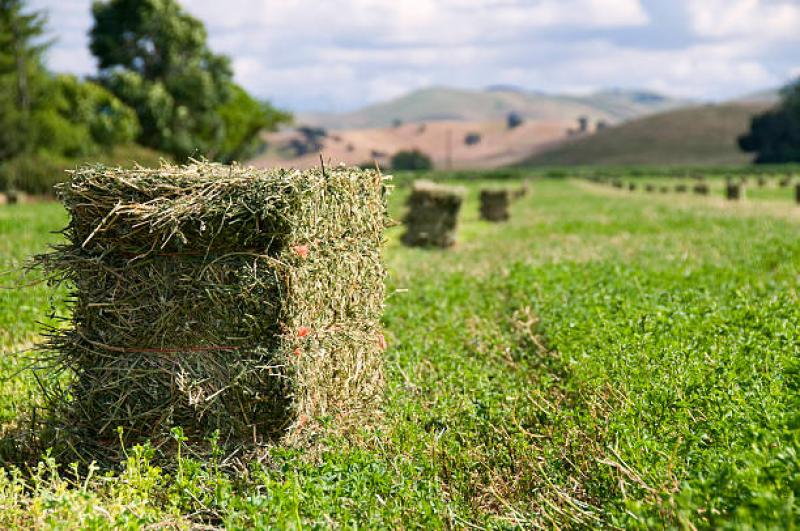Alfalfa Hay: A Nutrient-Rich Forage for Livestock Nutrition and Beyond
Alfalfa hay is a versatile and highly nutritious forage that has been a staple in the agricultural industry for centuries. Derived from the perennial legume plant, Medicago sativa, alfalfa hay has garnered widespread recognition for its exceptional nutritional value, making it a preferred choice among farmers and livestock owners worldwide. Its reputation as a superior feed source is well-deserved, as it boasts a myriad of benefits for animals, the environment, and even human health.
1. Nutritional Excellence:
One of the key reasons alfalfa hay is highly regarded is its impressive nutritional profile. Rich in essential nutrients such as protein, fiber, vitamins (A, B, C, D, E, and K), and minerals (calcium, magnesium, potassium, and more), this forage provides a well-rounded diet for various animal species. Whether it's for dairy cows, horses, sheep, goats, or rabbits, alfalfa hay offers a balanced diet that promotes growth, enhances milk production, and sustains overall animal health.
2. Digestibility and Palatability:
Alfalfa hay's palatability and digestibility are further factors contributing to its popularity as livestock feed. Animals find the taste and texture appealing, making it easier for them to consume and utilize the nutrients effectively. Additionally, its digestibility ensures that animals can extract maximum nutrition from the forage, minimizing wastage and enhancing feed efficiency.
3. Environmental Benefits:
Beyond its significance in animal nutrition, alfalfa hay plays a vital role in sustainable agriculture. As a legume, it has a unique ability to fix atmospheric nitrogen through symbiotic relationships with nitrogen-fixing bacteria, reducing the need for synthetic fertilizers. This nitrogen fixation not only improves soil health but also helps reduce greenhouse gas emissions and contributes to more environmentally friendly farming practices.
4. Soil Health and Erosion Control:
Alfalfa's deep root system improves soil structure and promotes water infiltration, reducing the risk of erosion. These deep roots also enable the plant to access nutrients and water from deeper soil layers, enhancing its drought tolerance and resilience. As a result, farmers often use alfalfa hay in rotational cropping systems to rejuvenate soil health and prevent land degradation.
5. Human Health and Medicinal Properties:
Alfalfa hay is not only beneficial for livestock but also for humans. Rich in antioxidants, it has been used in traditional medicine for various health conditions, including arthritis, high cholesterol, and digestive disorders. Moreover, its phytochemical content has been studied for potential anticancer properties, demonstrating its promising role in supporting human health and wellness.
In conclusion, alfalfa hay stands as a testament to the remarkable synergy between agriculture, animal nutrition, and environmental sustainability. Its nutrient-rich composition, combined with its positive impacts on soil health and greenhouse gas reduction, cements its position as a vital forage in the agricultural landscape. As our understanding of its benefits grows, so does its application in various industries, demonstrating that alfalfa hay's significance goes far beyond its role as mere livestock feed.
